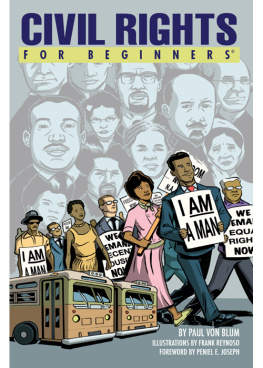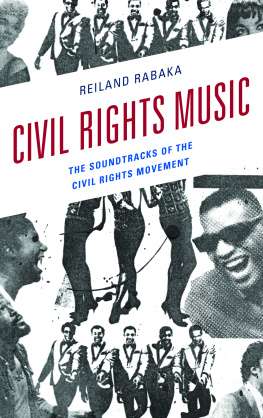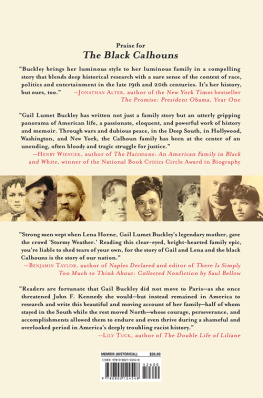THE BLACK EXPERIENCE IN AMERICA
FROM CIVIL RIGHTS TO THE PRESENT
AFRICAN AMERICAN HISTORY AND CULTURE
THE BLACK EXPERIENCE IN AMERICA
FROM CIVIL RIGHTS TO THE PRESENT
EDITED BY JEFF WALLENFELDT, MANAGER, GEOGRAPHY AND HISTORY

Published in 2011 by Britannica Educational Publishing (a trademark of Encyclopdia Britannica, Inc.) in association with Rosen Educational Services, LLC 29 East 21st Street, New York, NY 10010.
Copyright 2011 Encyclopdia Britannica, Inc. Britannica, Encyclopdia Britannica, and the Thistle logo are registered trademarks of Encyclopdia Britannica, Inc. All rights reserved.
Rosen Educational Services materials copyright 2011 Rosen Educational Services, LLC. All rights reserved.
Distributed exclusively by Rosen Educational Services.
For a listing of additional Britannica Educational Publishing titles, call toll free (800) 237-9932.
First Edition
Britannica Educational Publishing
Michael I. Levy: Executive Editor
J.E. Luebering: Senior Manager
Marilyn L. Barton: Senior Coordinator, Production Control
Steven Bosco: Director, Editorial Technologies
Lisa S. Braucher: Senior Producer and Data Editor
Yvette Charboneau: Senior Copy Editor
Kathy Nakamura: Manager, Media Acquisition
Jeff Wallenfeldt: Manager, Geography and History
Rosen Educational Services
Hope Lourie Killcoyne: Senior Editor and Project Manager
Nelson S: Art Director
Cindy Reiman: Photography Manager
Matthew Cauli: Designer, Cover Design
Introduction by Eve Creary
Library of Congress Cataloging-in-Publication Data
The Black experience in America: from civil rights to the present / edited by Jeff Wallenfeldt.1st ed.
p. cm.(African American history and culture)
In association with Britannica Educational Publishing, Rosen Educational Services.
Includes bibliographical references and index.
ISBN 978-1-61530-177-5 (eBook)
1. African AmericansHistory19642. African AmericansCivil rightsHistory. 3. United StatesRace relationsHistory. I. Wallenfeldt, Jeffrey H.
E185.615.B541523 2011
323.1196073dc22
2010014639
On the cover: Oprah Winfrey, one of the richest and most influential women in the United States (pictured here at the 2002 Emmy Awards), gives smiling testament to the great heights that have been reached by black Americansheights civil rights leader Martin Luther King, Jr., could have indeed only dreamed of when delivering his stirring and prophetic I Have a Dream speech on Aug. 28, 1963, at the Mall in Washington, D.C., capping the March on Washington. Kevin Winter/Getty Images (Winfrey); AFP/Getty Images (King)
On pages : U.S. Pres. Barack Obama delivers his first State of the Union address, Jan. 27, 2010, as Vice President Joe Biden listens. Mandel Ngan/AFP/Getty Images
CONTENTS











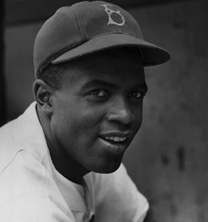


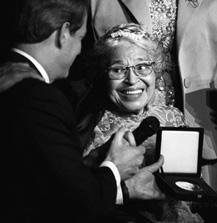
INTRODUCTION

In the early 1960s, nonviolent responses to segregated lunch counters included sit-ins and picketing. In this 1960 photo, African Americans associated with CORE (Congress of Racial Equality) and the NAACP (National Association for the Advancement of Colored People) picket the lunch counter of the chain store Grants in Norfolk, Va. Howard Sochurek/Time & Life Pictures/Getty Images
As World War II drew to a close the door of equality for African Americans was slowly being pried open. An executive order by Pres. Franklin D. Roosevelt in 1941 had banned discrimination in federal agencies and all unions and companies engaged in war-related work, though only after A. Philip Randolph, president of the Brotherhood of Sleeping Car Porters, and other African American leaders had threatened a march on Washington. Randolph was also behind the threat of mass civil disobedience that prompted Pres. Harry S. Truman to issue the executive order in 1948 that desegregated the military. The notable accomplishments of triumphant African American soldiers in World War II, as well as the sense of equality they had enjoyed while off-duty in Europe, led many to protest the varying degrees of racism, discrimination, and disenfranchisement they encountered upon their return to the United States. The nature of the prejudice African Americans experienced, however, depended on whether they faced the blatant segregation of the Jim Crow South or the more subtle discrimination of the North.
Since the arrival of the first slave ships in colonial America, freedom and equality have been the goal of African Americans, who, as a people, refused to accept institutionalized segregation and the unfulfilled promise of constitutionally guaranteed rights. The brutal struggle for abolition grew into the long battle for civil rights that crested in the 1950s and 60s. In the process, setbacks and solidarity, injury and intestinal fortitude, upheaval and uplift ultimately led to tremendous political, social, and economic advancement and extraordinary accomplishment in arts and culture by African Americans. Readers of this volume will learn how events and individuals, both past and present, contributed the rich and diverse threads of African American history and culture that have been woven into the fabric of the American story and how a dream deferred has increasingly been delivered.
Next page




